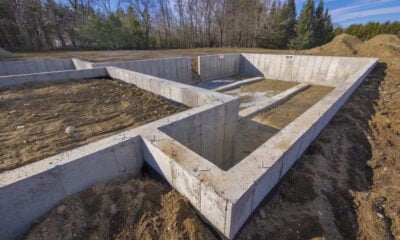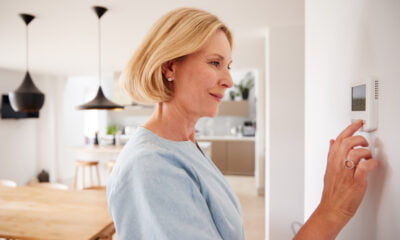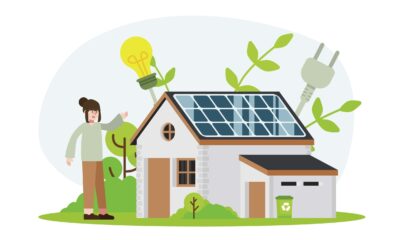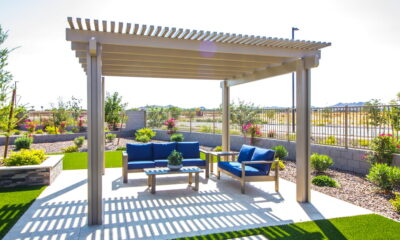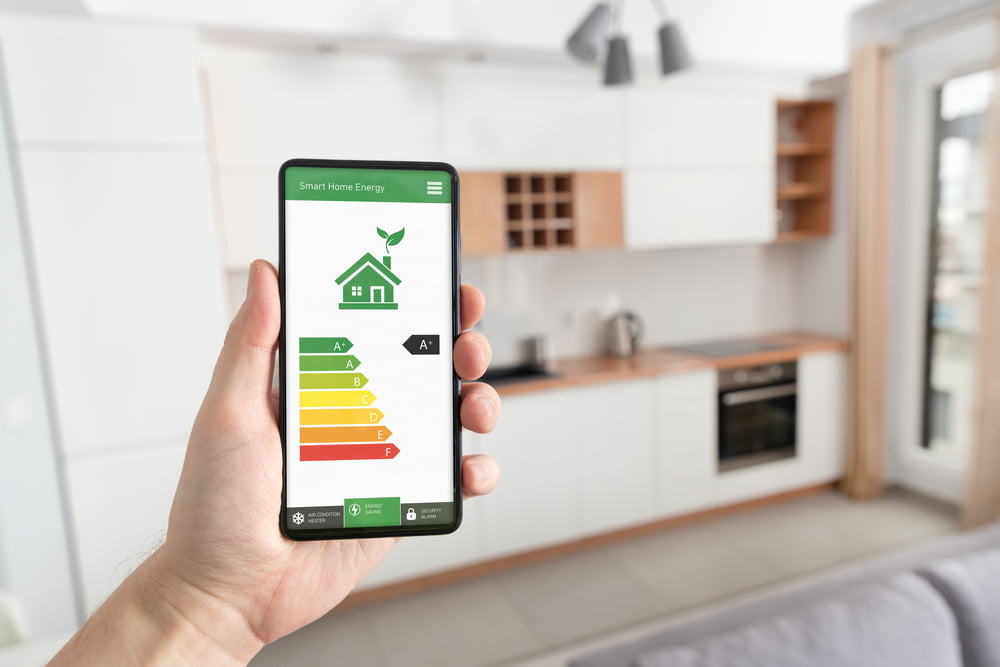

Energy
5 Ways to Make Your Home More Energy Efficient
A growing number of consumers in the UK are trying to make their homes more energy efficient. A large part of their motivation is to lower their carbon footprint, but they also want to save money by going green.
More UK Citizens Want to Help the Planet
Deloitte has been conducting surveys to better understand consumer attitudes and behaviors around sustainability for three years. Their research shows that consumers are increasingly making conscious decisions with sustainability and the environment in mind. However, more needs to be done to give consumers greater access to information and offer better affordability and availability of sustainable options. Also, customers are not investing as much with some sustainability endeavors as others. For example, only 16% of consumers switched to renewable energy options, although 75% are recycling more at home.
The first survey was conducted in March 2020, before the COVID-19 pandemic. The survey was conducted again in March 2021, and the results showed that consumers adopted more sustainable lifestyles during the pandemic. However, this was due more to the impact of COVID-19 rather than a conscious choice to adopt a more sustainable lifestyle.
In 2022, the Deloitte survey indicate that consumers are finding more ‘innovative’ ways to spend less due to the impact of inflation and supply chain disruptions. The survey showed that consumers are adopting a more sustainable lifestyle and choosing goods that are more durable or that can be reused or repaired easily. With economic uncertainty continuing, the question remains: will these behavioral changes become permanent?
One of the things that UK consumers need to focus on is making their homes more energy efficient. Keep reading to learn more.
What Are Consumers Doing to Make their Homes More Energy Efficient?
Sprucing up your home or building with the latest energy-efficient tech may seem like a time-consuming and costly decision. However, after a little time investigating products that could complement your home and lifestyle, a short-term cost could quickly turn into long-term savings.
There are several simple and effective products available to help you do your bit for the environment and reduce your carbon footprint, from low-cost draught excluders you can handmake, to the more dedicated option of insulating your walls. There are loads of ways to make your home more energy efficient and lower its carbon footprint.
Regardless of what products may suit your situation best, checking out some of the items listed below could be just as beneficial to your wallet as the planet; the Department for Business, Energy & Industrial Strategy claims that improving the efficiency of our homes could reduce our heating bills by around 20%, making it is just one of many reasons why you should finally take the leap into the world of energy-efficiency.
Upgrading your Windows
Regulations now mean that double-glazed windows are compulsory for any UK homes built after 2022, and with windows accounting for 10-30% of all heat loss, it’s clear why they’re one of the key topics of interest when it comes to energy efficiency.
The logic behind glazed windows is simple, with both double and triple-glazed windows referring to how panes of glass (two for double-glazed, three for triple-glazed) trap an insulating barrier of air between them. There are several understated benefits that come with upgrading your windows, and, surprisingly, not all relate to energy efficiency alone:
- Upgrading to double-glazed: The Energy Saving Trust has shown that if all single-glazed windows were replaced with A++ double-glazed windows, it could save you up to £235 and 405kg of carbon dioxide annually.
- Upgrading to triple-glazed: Double-glazed is good, but triple-glazed is better; triple glazing is about 50% more effective at helping reduce energy costs than its double-glazed counterpart.
- Noise pollution: Upgrading your windows can dampen noise, with double-glazed windows capable of reducing sound levels by as much as 31 decibels.
- Condensation: Double-glazed windows can drastically reduce condensation and damp, even in rooms more prone to it, such as bathrooms and kitchens.
Introducing Smart Thermostats
Smart thermostats, such as the award-winning Hive thermostat, are owned by around 1.67 million UK households and are a key driver behind the smart tech revolution. After a little investigation, the reason behind their popularity becomes clear; jam-packed with innovative features designed to cut down on your energy usage, devices such as Hive could help you save up to £120 a year on your bills, and, if all homes had one, the UK could cut up to 18.3 million tonnes of CO2 per year.
There are plenty of smart thermostats to choose from and whilst most can turn off your hot water or boiler when you leave home, others only heat the rooms that need it. The most popular smart thermostat devices are the above-mentioned Hive, or the slightly more costly Google Nest, which can learn from your previous heating habits and utilise this information to efficiently program itself. Both products range in price from £150 to around £185, though it’ll only take around a year and a half of using the product for it to have paid for itself in savings, so it’s definitely worth the potential investment.
LED Lighting
Lightbulbs may seem like an insignificant product to concern yourself over, but with lighting accounting for 15% of a typical UK household’s electricity bill, it can do you good to ensure you’re opting for the energy-efficient ones. Fortunately, there are only two types of bulbs you have to differentiate and choose between: traditional halogen bulbs and LEDs.
Essentially, you want to go for the LED lights; they are less costly in the long run as they are a similar price to their halogen counterpart but use less energy and last longer. The difference between the lifespan of the bulbs is not insignificant, with the Energy Saving Trust stating that whilst a halogen bulb will last around two years – or 2,000 hours – an LED under similar conditions will last around 5x longer with a lifespan of around ten years.
Eco Shower Head
Perhaps surprisingly, taking a shower does not automatically use less water than taking a bath. Depending on the type of electric shower you have – think power shower – a bathtub could be filled in only five minutes.
This is where an eco shower head comes into play. Designed to be used in conjunction with a mixer or power shower, an eco shower head can provide you with that sought-after feeling of high pressure without having to use up more water. There are many eco shower heads available to choose from, though the higher quality the head, the more water it can save you.
Insulation
Insulating your home may seem like a daunting task to undertake both in terms of time and money, however, with so many different types of insulation on offer, you’re sure to find one that suits your needs without breaking the bank.
Different types of insulation have different pros and cons; the more expensive a type of insulation is likely reflects how invasive the process will be to undertake, though these methods will often be the best at retaining heat and most cost-effective in the long term. Luckily, there are much less invasive options you can take advantage of. Let’s quickly run through some insulation options, from least invasive to most:
- Draught Excluders: Also known as a door snake, this is a very affordable insulation choice used to stop cold air from coming through the gaps under your door. For such a low-effort option, it still saves you around £45 a year on your bills.
- Loft Insulation: Loft insulation offers a non-invasive way to help insulate your home and is also one of the most effective methods. If installed correctly, loft insulation should pay for itself as many times over in its 40-year lifetime.
- Floor Insulation: Around 15% of heat is lost through uninsulated floors, which means insulating it can save you around £60 annually. You’ll only need to insulate your ground floor in most cases, making this kind of insulation both economical and more practical.
- Wall Insulation: This kind of insulation is an expensive option but with around a third of all the heat lost in an uninsulated home escaping through the walls, it could very well be worth the investment.
There are lots of brands synonymous with high-quality insulation products, such as Knauf, which has over 40 years of experience in keeping homes safe from draughts. Before you take on the task of insulating your home, it’s always worth checking if there are any government grants that can help you out by visiting GOV.UK.


 Environment10 months ago
Environment10 months agoAre Polymer Banknotes: an Eco-Friendly Trend or a Groundswell?

 Environment11 months ago
Environment11 months agoEco-Friendly Home Improvements: Top 7 Upgrades for 2025

 Features9 months ago
Features9 months agoEco-Friendly Cryptocurrencies: Sustainable Investment Choices

 Features10 months ago
Features10 months agoEco-Friendly Crypto Traders Must Find the Right Exchange




